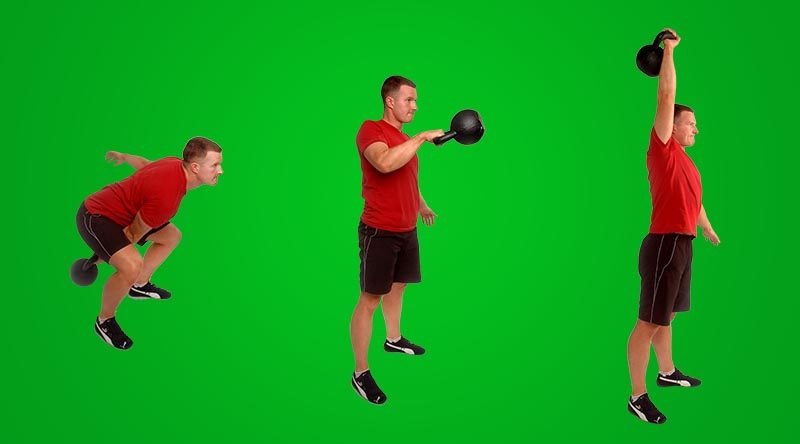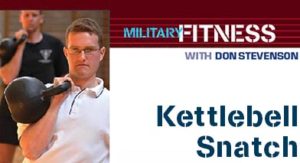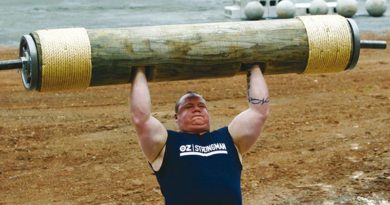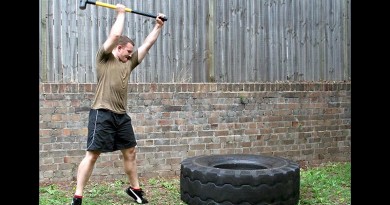Military Fitness – Part 13

The King of Combat Conditioning
In general, I’m not a big fan of reducing training to a list of ‘best’ or ‘favourite’ exercises. After all, part of the fun of working in strength and conditioning is the infinite variety of tools, exercises and programs that can be used to develop fitness. But, every time I run a kettlebell workshop, inevitably I’m asked about my favourite drills and programs.
What people really want to know when they ask this question is, what I think are the few key exercises they should be doing to get the maximum benefit out of kettlebell training with the least amount of wasted time.
It turns out that, for combat conditioning, the answer is pretty simple. I believe you can achieve a very high level of combat fitness even if you were to reduce your program to just three exercises – kettlebell Turkish get-ups, pullups and kettlebell snatches.
Turkish get-ups and pullups will cover your upper body and core strength and kettlebell snatches are easily one of the best drills for developing lower back and leg power, shoulder and grip strength and aerobic/anaerobic conditioning.
In fact, I think kettlebell snatches are the king of combat conditioning exercises.
Kettlebell snatches make an excellent addition to any combat conditioning program because of their brutal difficulty and also because they are low impact compared to running, which makes them ideal for anyone recovering from shin splints or knee injuries.
In this article, I want to show you how to perform kettlebell snatches and also outline some short but brutal workouts you can add to your current program so you can reap the benefits of this awesome drill.
Performing the kettlebell snatch
The kettlebell snatch is essentially a one-arm swing to overhead, combined with a punch-through to get the kettlebell on the back of the wrist before you lock out.
I suggest that you practice swings for a few sessions before attempting the snatch.
- The key to performing snatches is to use the hips and legs to drive the weight up. Start by holding the kettlebell in one hand and push the hips back so that the kettlebell swings between the knees.
- As the kettlebell swings back, it will load up the glutes and hamstrings. Drive the kettlebell up by snapping the hips forward and extending the legs fully.
- Once the kettlebell is at about head height, pull the hand in slightly toward the shoulder. This will pull the kettlebell back toward you and allow you to get the hand back under the kettlebell before it gets overhead.
- As the kettlebell continues to travel upward, punch the hand through under the ball of the kettlebell. If you time it right, the kettlebell will end up resting on the back of the forearm before your arm locks out and you will feel minimal impact on your wrist.
- Lock out at the top by punching the hand toward the sky. This is critical for shoulder safety!
- To reverse the movement, push the hips back slightly and push the hand forward. The kettlebell will automatically flip over the hand and swing back between the legs into the start position for the next rep.
- Repeat steps two to six for sets of 10 to 20 reps each arm.
Tips for performing the Snatch
When performing the snatch, it is important to get into a rhythm. If the kettlebell flips over and hits your wrist you may need to punch through with more force and speed or you may be keeping your arm too straight during the initial swing.
Practice with a light weight initially and work on getting the technique correct.
The momentum required for the weight to reach the overhead position comes primarily from the legs. The arm simply guides the kettlebell into position and stabilises it at the top.
Once you’ve mastered the snatch and can perform 10 good reps each arm, try adding the following mini workouts to your program. I promise that, despite being short, these workouts will lead to noticeable improvements in your fitness in just a few weeks.
Workout #1 – Density Snatches
The ultimate in simple but effective workouts. Pick a fixed time and perform as many snatches as possible in that period. Resting, hand changes and putting the kettlebell down are all permitted but quitting is not!
I suggest starting with five minutes and adding time each workout until you reach 10 minutes, then try to complete more reps each time you perform this workout.
Some numbers to aim for (men 24kg kettlebell, women 12kg) are, 10 minutes, 150 acceptable, 200 good, 230+ very good, 250+ world class.
Workout #2 – Tabatas
Perform as many snatches as you can for 20 seconds, rest for 10 seconds, switch arms and repeat for 8 intervals in total (4 minutes).
Workout #3 – High-rep Challenges
Pick a number – 100, 200, 500 or even 1000 reps (yes 1000!) – and aim to complete them all without putting the kettlebell down or resting, except in the overhead lockout position.
The gold standard is 1000 reps with a 16kg kettlebell in less than 1 hour.
.
.
.
.
.

.
.







